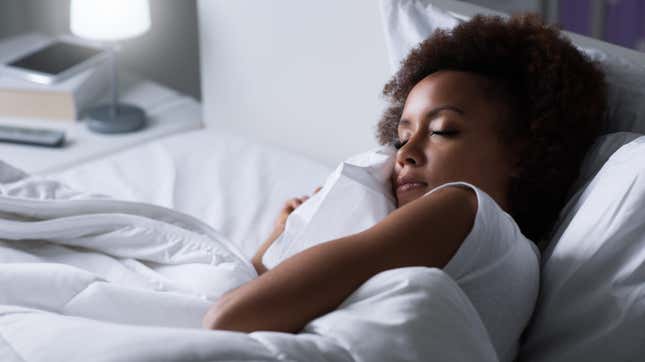
We know that sleep plays a significant role in our well-being and overall health. Unless we’re switching between time zones or pulling all-nighters, our body’s internal clocks—also known as our circadian rhythm—tell us when it’s time to go to sleep and wake up in the morning. However, a range of environmental cues can impact your sleep cycle, making it a challenge for many of us to maintain consistent, quality sleep.
Thankfully, there are some ways you can use technology to make the task of falling (and staying) asleep less daunting. Let’s explore the different technologies you can try to optimize your sleep and feel well-rested every day of the week.
Optimal lighting for sleep
Lighting can play a key role in how easy it is to fall asleep, stay asleep, and when you wake up in the morning. The amount of light our bodies are exposed to is the predominant influence of circadian rhythms. For example, white tuning light offers benefits to those looking to improve their sleep. Try using white tuning bulbs to help you get your sleep schedule back on track.
Additionally, there are many types of lights on the market that will set the tone of the light based on time of day. In other words, when it’s time to wake up in the morning, the light will simulate a sunrise, and a sunset for when it’s time to wind down for the night. These come at a variety of price points to suit your needs. Try the Hatch Restore for $129 or the PBPAO version for around $36.
Sleep management apps for smartphones
Both the Google Play store and the iOS App Store are chock full of sleep management apps for you to try that can tell you the amount (and quality) of sleep you’re getting, or allow you to listen to white noise or ambient sounds. Many are free to download with optional in-app purchases available. Here are some of our favorites:
- Sleep Cycle: This autonomous sleep cycle tracker uses machine learning algorithms to analyze your sleep and what sleep cycle you’re in throughout the night. It can also sense when you’re sleeping the lightest and wake you up with an alarm, which can help you feel less groggy in the morning.
- Pillow: The Pillow app works with iPhones and Apple Watches to help you gain insight into your sleep habits. Like Sleep Cycle, Pillow will track when you’re in the lightest sleep and wake you up according to that period.
- SleepScore: SleepScore offers advanced, detailed sleep analytics and science-backed sleep advice to help you reset your circadian rhythm.
- Rise: Users on Rise can understand their sleep debt and their circadian rhythm so they can learn how to improve their sleep habits. According to the app’s website, more than 80% of users feel the benefits of improved sleep within five days of using Rise.
Our favorite sleep tech tools
You know you shouldn’t use your phone before bed, but not all tech is out of bounds here. From wearables to tabletop devices, sleep tech is booming thanks to these innovations that help you fall (and stay) asleep:
- Muse S Headband ($249): The Muse S Headband is a wearable device that helps with sleep and meditation. The headband uses advanced EEG technology to monitor brain waves and help you find the best sleep position. It also has an app that works on smartphones so you can review your sleep score and gather insights about your sleep.
- SNOOZ white noise machine ($99): This machine makes white noise using a fan that doesn’t actually produce cold air, so you stay warm but don’t run into the looping sound issue other white noise machines are known for.
- Apollo Neuro wearable ($299): The Apollo Neuro is a wearable that allows you to choose a vibe from a list on its app. During the day, it can give you an energy boost, but at night, there are fall-asleep functions that can reduce your stress and push you into dreamland.
- MUSICOZY sleep headphones ($22.99): This sleep mask comes with headphones built in and connects to your devices using Bluetooth, so you can block out the light and play your preferred music or white noise without disturbing anyone else.
- SleepBank sleep aid ($568): If you’re plagued by insomnia, try SleepBank and its Sleeping Frequency Technology to relax your brain.
This post was originally published in December 2021 and was updated on July 27, 2023 to remove discontinued products, including Cove and Dream On, and add new devices.

